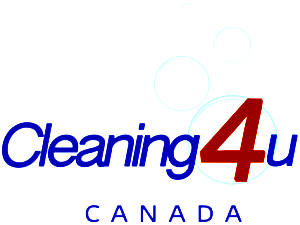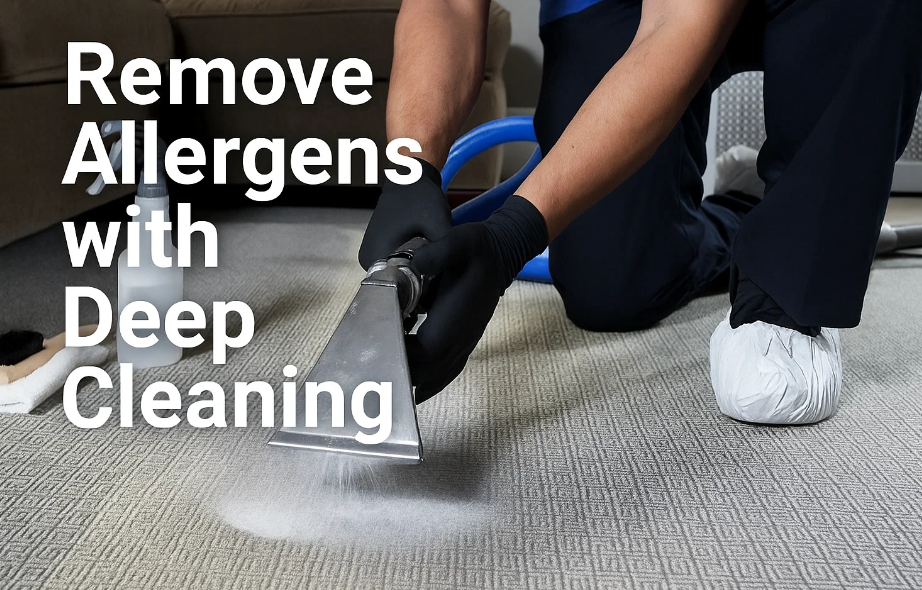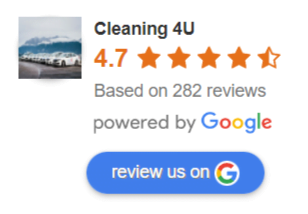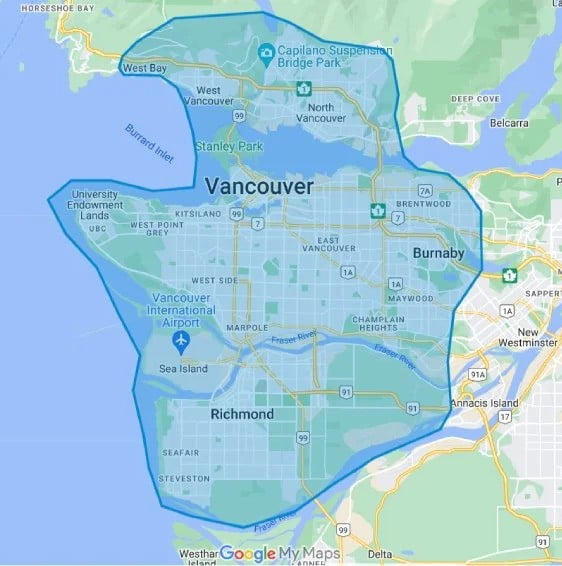How to Remove Allergens with Deep Cleaning Vancouver
Allergens, such as dust mite waste, pet dander, pollen, mold spores, and food proteins, are microscopic irritants that can provoke symptoms in sensitized individuals. These particles often settle on surfaces or float in the air, making them hard to avoid entirely.
However, with strategic, evidence-based cleaning, you can significantly reduce allergen levels in your indoor environment and mitigate their impact on health. This article explores how to remove allergens through careful cleaning, backed by research and best practices.
What Are Indoor Allergens & Why Do They Persist
Allergens are tiny particles or proteins that can trigger immune reactions in sensitive people. The most common ones found inside homes include:
Dust Mites
These microscopic creatures thrive in warm, humid environments, especially in bedding, mattresses, and upholstered furniture. Their waste particles are a leading trigger for allergy and asthma symptoms.
Pet Dander and Hair
Pets shed microscopic flakes of skin, along with saliva and urine proteins that stick to fur and surfaces. These particles can linger in the air and cling to fabrics for long periods.
Pollen
Even if you don’t have plants indoors, pollen enters through windows, doors, and ventilation systems, or hitchhikes on clothing and shoes.
Mold and mildew spores
Moisture from bathrooms, basements, or leaks creates the perfect environment for mold. The spores it releases can cause sneezing, coughing, and breathing difficulties.
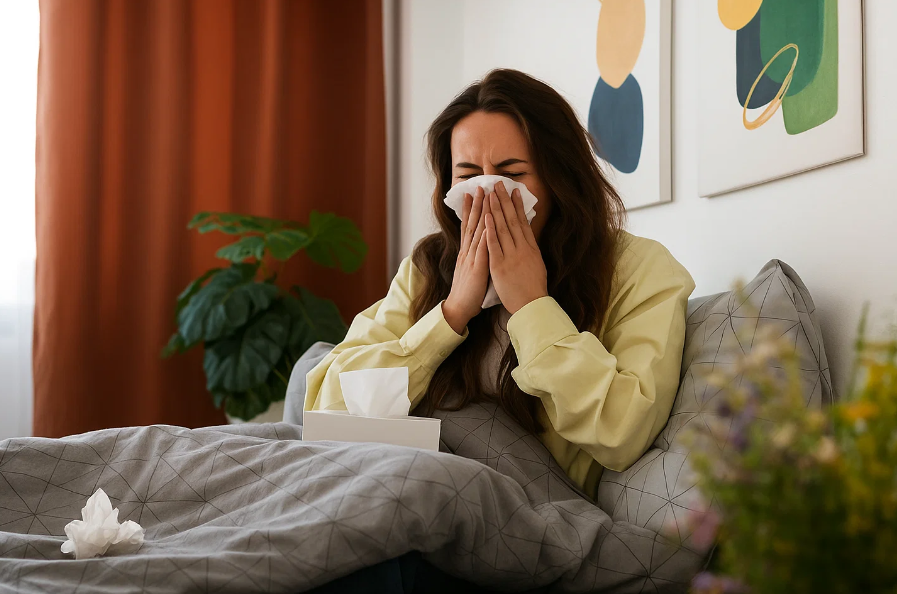
Stop Allergens with Deep Cleaning Vancouver
Food Allergens (proteins)
In kitchens, cross-contamination leaves behind allergenic proteins (like those from peanuts, milk, or gluten) on counters, cutting boards, and utensils, even after quick wipe-downs.
Despite regular cleaning, allergens remain because:
- They are microscopic
- They cling to surfaces
- Dry cleaning isn’t enough
Research from the Food and Agriculture Organization (FAO) and the U.S. Food and Drug Administration (FDA) shows that an area can appear “microbiologically clean” yet still contain allergen residues. In other words, killing germs does not automatically remove allergenic proteins.
Best Practices & Tools For Removing Allergens
HEPA Filters & Hypoallergenic Vacuums
Upgrading to a vacuum cleaner with a HEPA (High Efficiency Particulate Air) filter greatly improves the removal of fine allergens. HEPA filters can capture particles down to ~0.3 microns with high efficiency.
Even so, not all “HEPA” vacuums perform equally; inferior models may release trapped particles back into the air.
Microfiber & Damp Dusting
Use microfiber cloths, dampened slightly rather than dry dusters. Microfiber fibers can trap particles rather than just pushing them around. Wet or damp dusting helps avoid re-aerosolization.
For fabrics and furniture, a carpet cleaning Vancouver service helps remove deep-seated allergens that vacuums alone miss.
Cleaning Chemicals & Sanitizers
- When dealing with food allergens, the FDA recommends a full wash–rinse–sanitize–air dry procedure, not just wiping, to effectively remove proteins.
- Use cleaning agents that are appropriately formulated (enzyme detergents, degreasers), depending on the allergen type (lipid vs protein-based).
- Avoid overuse of harsh chemicals (like strong quaternary ammonium compounds) in living spaces, since they themselves may irritate respiratory tracts.
Dehumidifiers & Humidity Control
Dust mites and mold thrive when relative humidity exceeds ~ 50%. Controlling humidity (e.g., via dehumidifiers or improving ventilation) keeps these allergens in check.
Air Purifiers
Portable air purifiers equipped with HEPA filters can reduce airborne allergens such as pollen, dust, and dander. Some studies in hospital rooms show that combining purifiers and curtains helps reduce aerosol (particle) concentration faster than ventilation alone.
When you run the purifier on high while cleaning, it disturbs settled dust and releases particles.
Room-by-Room Guide to Deep Cleaning Vancouver Homes
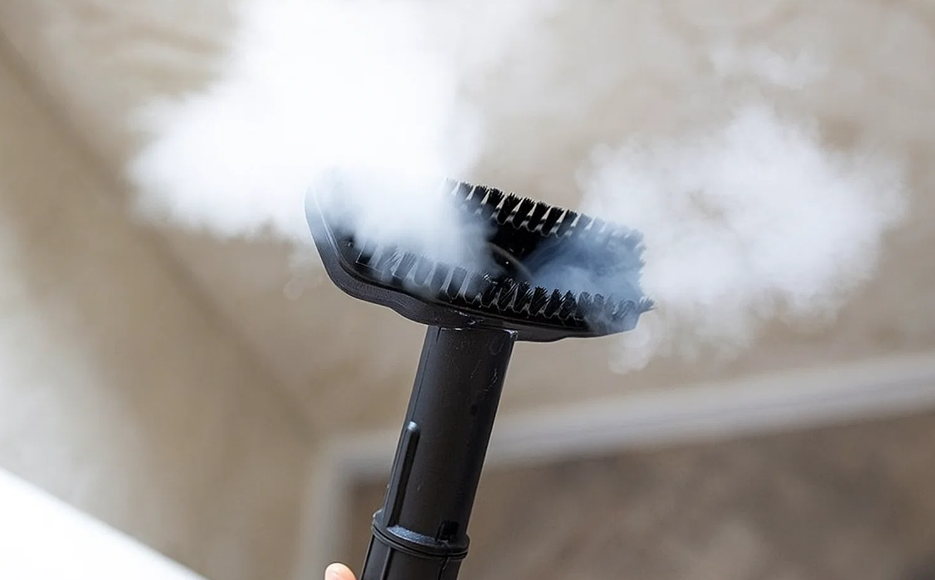
Close-up of a handheld steam cleaning machine releasing hot steam for Deep Cleaning Vancouver.
Below is how to tackle major rooms and surfaces, with tips for maximum allergen removal.
Bedrooms & Bedding
- Encasements: Use allergen-proof covers for mattresses, pillows, and box springs.
- Frequent washing: Wash bedding, pillowcases, and blankets at least weekly in hot water (at or above ~55–60 °C if fabric allows) to kill dust mites.
- Minimize clutter & textiles: Remove excess stuffed toys, floor rugs, and heavy curtains in the bedroom if possible, as they harbor dust.
- Vacuum under the bed: Use a HEPA vacuum regularly around and under bed frames.
If you need a full refresh, mattress cleaning Vancouver services remove hidden allergens from deep inside.
Living Room & Upholstered Surfaces
- Use a vacuum with upholstery attachments and HEPA filters for sofas, cushions, and curtains.
- Steam cleaning (if fabric allows) can help dislodge allergens.
- Consider replacing heavy drapes with washable, lighter fabrics.
- For surfaces under and behind furniture, damp dust or vacuum regularly.
Floors, Carpets & Rugs
- Prefer hard flooring (wood, tile, vinyl) over wall-to-wall carpet, where possible, as hard flooring doesn’t trap allergens as easily.
- Use area rugs that can be taken outside and shaken or vacuumed on both sides.
- Vacuum daily (or several times per week) high-traffic areas with a HEPA vacuum.
- Do a thorough deep cleaning (steam, shampoo with allergen-safe detergent) periodically.
- Use baking soda sprinkled lightly before vacuuming to help loosen particles in carpet fibers (some cleaning guides suggest this as a practical hack).
Kitchens & Dining Areas
- Clean food contact surfaces thoroughly following wash-rinse-sanitize principles to avoid residual allergenic proteins.
- Scrape and pre-clean surfaces before applying detergents to reduce allergen load.
- Use cloths stored in sanitizer solutions to prevent cross-transfer of allergens when wiping surfaces.
- Ensure spills, crumbs, and grease are cleaned immediately to prevent buildup.
- Vent the kitchen (hood fan, window) to remove airborne grease and particles.
Bathrooms, Basement & Moisture-Prone Areas
- Fix leaks, improve ventilation (exhaust fans), and maintain low humidity to prevent mold growth.
- Use mold-resistant paint or materials in damp zones.
- Clean grout, tiles, and shower areas regularly with mold-safe cleaning solutions.
- Wipe surfaces down after use to reduce moisture accumulation.
How Often Should You Clean to Control Allergens?
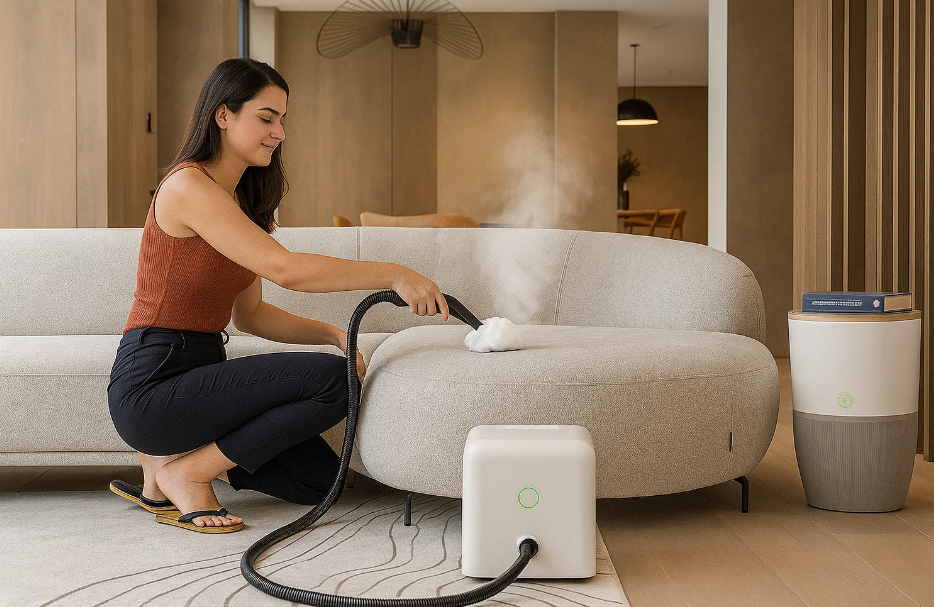
Steam cleaning sofa – Deep Cleaning Vancouver
The secret to reducing allergens is regular cleaning, not just a big, deep clean once in a while. Breaking tasks into daily, weekly, monthly, and seasonal routines makes it simple and effective.
Daily or a Few Times a Week
Clean the spots that get dirtiest fastest. Vacuum busy areas like hallways and living rooms with a HEPA vacuum to trap dust and dander.
Wipe shelves, tables, and electronics with a slightly damp microfiber cloth so dust doesn’t fly back into the air. If something spills, clean it right away to stop mold or food particles from causing problems.
Weekly
Once a week, wash bedding in hot water to kill dust mites. If you have curtains or washable covers, give them a clean too. Dust along baseboards and vacuum sofas and chairs to remove hair, dander, and crumbs.
Monthly
Each month, go a bit deeper. Move furniture so you can vacuum behind and underneath. Clean carpets with a steam cleaner or shampooer to pull out allergens stuck deep inside. Wash or replace the filters in your vacuum, air purifier, or HVAC system so they keep working properly.
Seasonal & Annual Deep Cleaning Vancouver Schedules
A few times a year, do a bigger clean. Get HVAC ducts checked and cleaned if needed. Steam clean rugs or carpets to refresh them. Make sure your dehumidifier or humidity control system is working so indoor air stays below 50% humidity. This keeps mold and dust mites from multiplying.
Bottom Line
You can’t get rid of allergens completely, but you can make them much less of a problem with regular, smart cleaning. Sticking to a routine makes your home healthier and more comfortable for anyone with allergies.
Sometimes, even with your best effort, allergens still build up in hidden places. That’s when it helps to hire deep cleaning services Vancouver. They have stronger equipment and know how to reach the spots most people miss.
